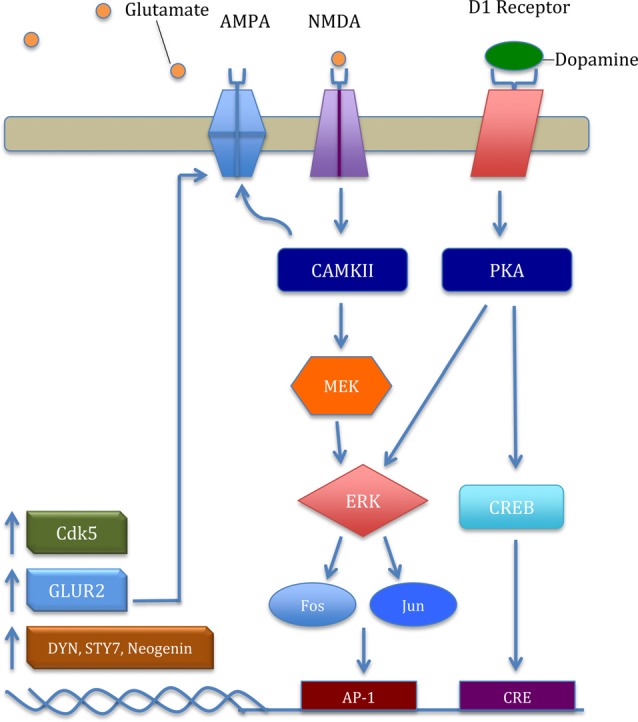Figure 2.

The general mechanism of the extracellular signal-regulated kinase (ERK) pathway and key downstream products important in cocaine addiction. Glutamate binding excites the N-Methyl-D-aspartic acid receptor (NMDAR) and upregulates intracellular calcium. Excitation provokes a signaling cascade, upregulating transcription factors Fos and Jun. Subsequently, increased ΔFosB acts on activator protein-1 (AP-1) and upregulates transcription and translation of cyclin-dependent kinase 5 (CDK5), GLUR2, dynorphin (Dyn), synaptotagmin VII (Syt7), and neogenin. CDK5 mediates localization and GLUR2-mediated plasticity in α-amino-3-hydroxy-5-methyl-4-isoxazolepropionic acid receptor (AMPAR) through phosphorylation of δ-Catenin (Poore et al., 2010). Increased GLUR2 upregulates the ERK pathway in a positive-feedback type manner through increased AMPAR in the nucleus accumbens (NAcs). Moreover, increased D1 receptor activation upregulates protein kinase A (PKA), phosphorylating the transcription factor cAMP response element binding protein (CREB), leading to further increase in CDK5 and GLUR2 protein levels.
